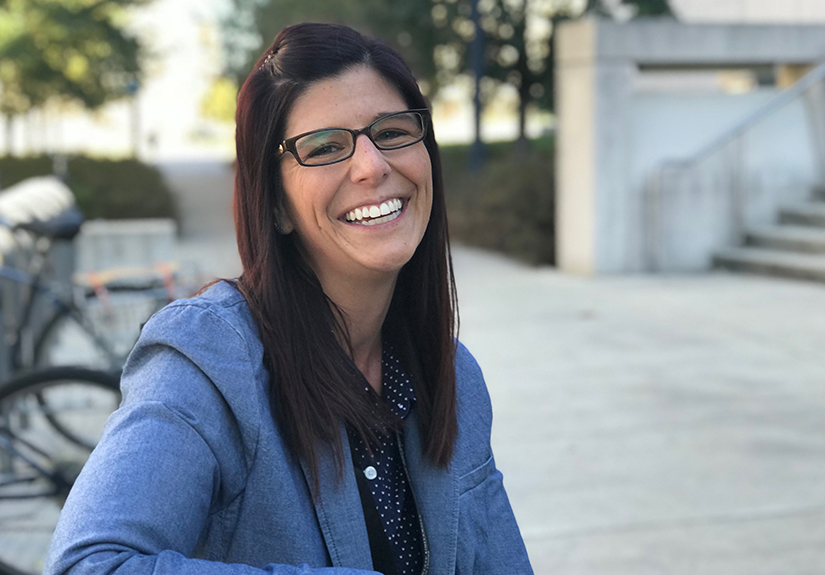Slow and steady earns the degree
After more than nine years, Tabitha Hootman finds herself a few courses away from earning her BSPH.

Most undergraduates try to attain their degrees in four, maybe five years. But Tabitha Hootman is in no rush to get her diploma – and that is not necessarily a bad thing.
Hootman began working on her Bachelor of Science in Public Health degree in public health sociology at the College of Public Health in 2009 after she was laid off as a registered nurse in Springfield, Ohio. She is also a patient access manager at Ohio State’s Harding Hospital for mental and behavioral health.
“I was really looking for something to better myself, so I got lucky enough to get a job here at Ohio State,” Hootman said. “That is when I really started looking to see what they had up here; the RN program wasn’t quite what I was looking for, and that is kind of how I found public health.”
Hootman works over 60 hours a week while at the same time working toward her degree. To balance a full-time job and school, she has only had time to take one or two classes a semester to fulfill her undergraduate degree requirements.
“The hardest challenge in this path for me has been to build on my classes," she said. "Most seniors have the privilege during their junior year to take concepts and apply them to what they are learning this year. For me, I took that class six years ago because that is when my schedule would allow it. I am not always going by the curriculum.”
Hootman’s many challenges along the journey, however, have already led to tangible rewards. Through her extended undergraduate career, Hootman has found classes that have impacted her personal growth in public health and in the workforce, and have allowed her to make a real impact.
“Epidemiology, the study of transfer of disease and how it affects us, that’s the kind of stuff that I have been taking back to the hospital and working into my own workflows, and educating my team on—how can we help make the department safer for the patients when they come,” Hootman said.
Being just a couple of classes away from her diploma, Hootman wants to continue to bring what she has learned to the workforce, and not venture too far from campus.
“When I graduate – I mean, I can’t wait – but it is going to be bittersweet; I am going to stay where I am at. I love the hospital. I love campus. I love Ohio State and I am really ready to continue to give back even more," Hootman said.
“I feel so rewarded just going back to work, helping everybody and being able to touch so many lives with what I have learned.”
About The Ohio State University College of Public Health
The Ohio State University College of Public Health is a leader in educating students, creating new knowledge through research, and improving the livelihoods and well-being of people in Ohio and beyond. The College's divisions include biostatistics, environmental health sciences, epidemiology, health behavior and health promotion, and health services management and policy. It is ranked 22nd among all colleges and programs of public health in the nation, and first in Ohio, by U.S. News and World Report. Its specialty programs are also considered among the best in the country. The MHA program is ranked 5th and the health policy and management specialty is ranked 21st.